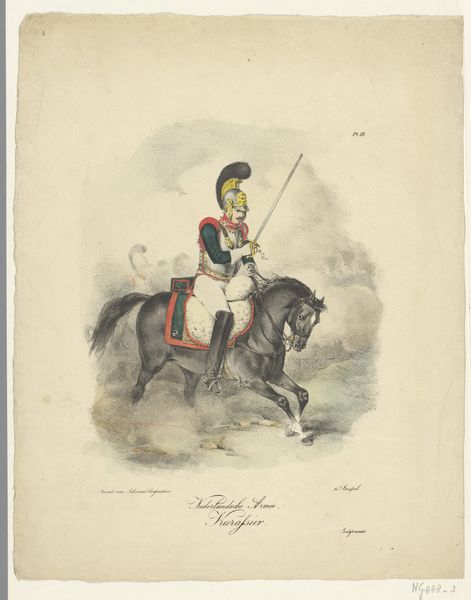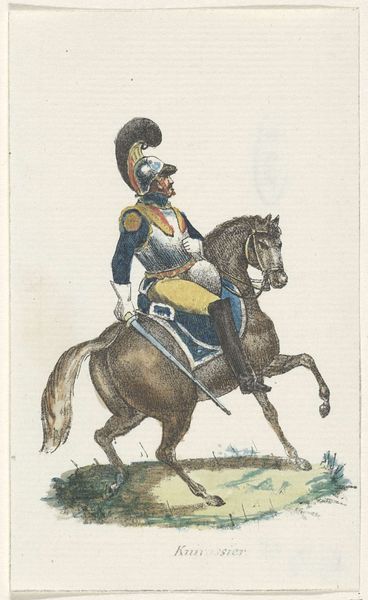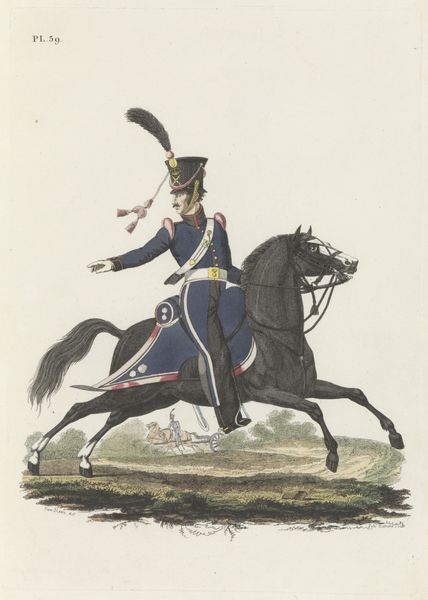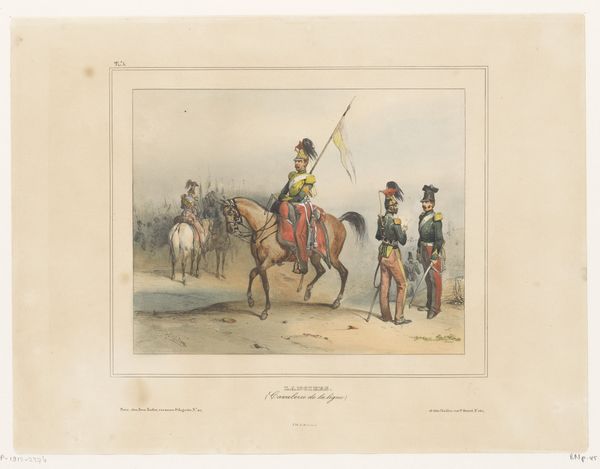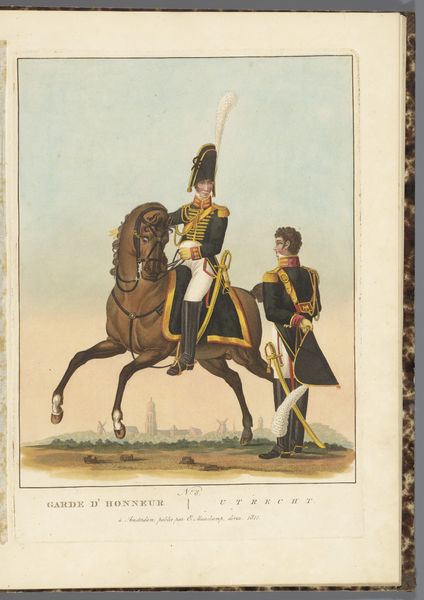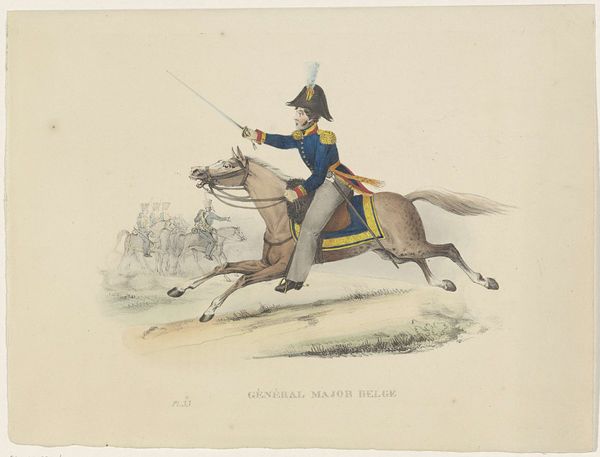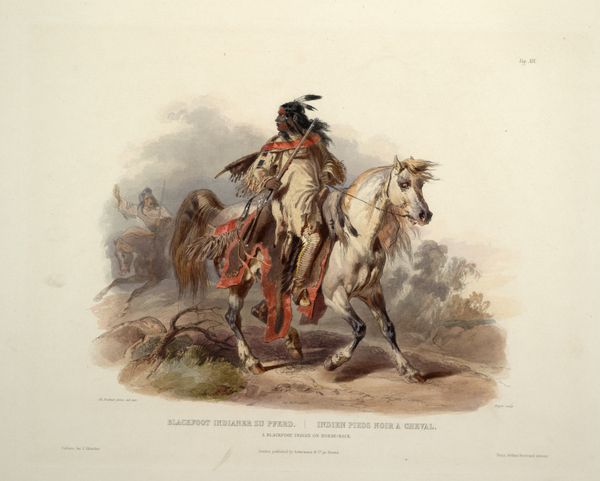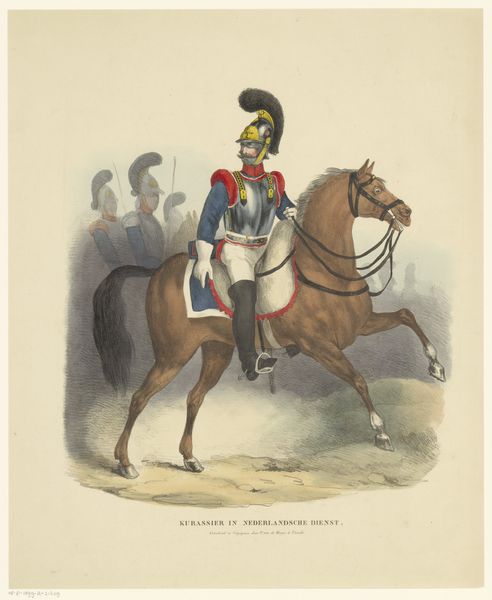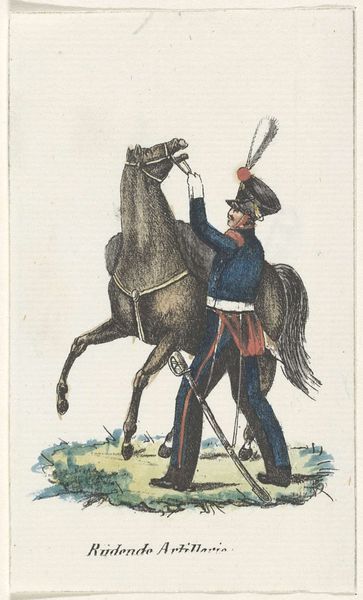
watercolor
#
portrait
#
landscape
#
watercolor
#
watercolour illustration
#
history-painting
#
academic-art
#
watercolor
#
realism
Dimensions: height 359 mm, width 268 mm
Copyright: Rijks Museum: Open Domain
Curator: The first thing I notice about this work is the airiness. The subject is elevated above a muted landscape and appears to almost float—the colors and the style give the piece a weightless quality. Editor: Well, it is a watercolor, so a sense of lightness is perhaps inevitable, wouldn't you say? This is "Equestrian Portrait of Willem II, King of the Netherlands," dating roughly from 1847 to 1862. Curator: Ah, yes. The symbol of monarchy. What strikes me here is that, like many portraits of the time, the work immortalizes the image of regal, almost divine right through these very specific signifiers. It continues a lineage of visual language, wouldn't you agree? Editor: I think that's partially accurate. It’s also crucial to consider that Willem II's reign was marked by political and social changes, like the revisions to the constitution. I think this portrait plays into the complicated negotiation between the monarchy's perceived authority and those emerging demands for a more democratic process. Curator: You make a fair point. Yet, I still feel that the artist—whose name is, unfortunately, unknown—used symbols of status in a rather established way. The elaborate military attire, the rearing horse, the distant landscape… all familiar icons of power. The way he holds what seems to be a rolled-up letter hints at wisdom and order as well. Editor: Yes, and maybe there's also a subtle statement on duty in that gesture? Think of his involvement with military campaigns; such images were deployed for promoting his role as a national figurehead. How might the work operate if viewed from a post-colonial perspective, in consideration of his relationship with the Dutch colonies? Curator: Fascinating question. Perhaps the very posture we see embodies this power and his relation to it: he gazes straightforward, completely secure in his power… his identity. He projects authority. But thinking about your comment—his gaze would not extend toward all… it could mean subjugation for some. Editor: Right. He appears still relevant in many ways in his projection of power. It urges us to consider our relation to these forms of visual representation and to reassess whose stories are highlighted in these institutional spaces. Curator: Yes. This equestrian portrait echoes, and now, questions these archetypes. I see now, it certainly pushes one to examine art beyond its aesthetics. Thank you for adding an important perspective. Editor: My pleasure. Looking closely allows us to understand not only the artwork but its complicated legacy in contemporary discourses around identity, legacy, and power.
Comments
No comments
Be the first to comment and join the conversation on the ultimate creative platform.
